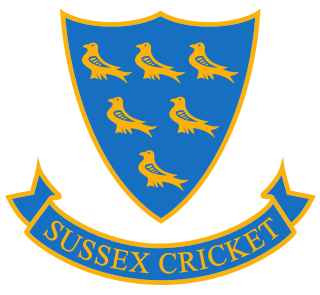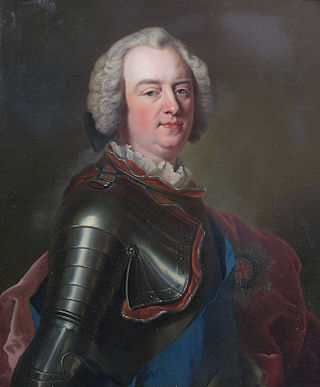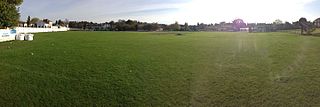
The County Championship is the domestic first-class cricket competition in England and Wales and is organised by the England and Wales Cricket Board (ECB). It became an official title in 1890. The competition consists of eighteen clubs named after, and representing historic counties, seventeen from England and one from Wales.

Kent County Cricket Club is one of the eighteen first-class county clubs within the domestic cricket structure of England and Wales. It represents the historic county of Kent. A club representing the county was first founded in 1842 but Kent teams have played top-class cricket since the early 18th century, and the club has always held first-class status. The current Kent County Cricket Club was formed on 6 December 1870 following the merger of two representative teams. Kent have competed in the County Championship since the official start of the competition in 1890 and have played in every top-level domestic cricket competition in England. The club's limited overs team is called the Kent Spitfires after the Supermarine Spitfire.

Sussex County Cricket Club is the oldest of eighteen first-class county clubs within the domestic cricket structure of England and Wales. It represents the historic county of Sussex. Its limited overs team is called the Sussex Sharks. The club was founded in 1839 as a successor to the various Sussex county cricket teams, including the old Brighton Cricket Club, which had been representative of the county of Sussex as a whole since the 1720s. The club has always held first-class status. Sussex have competed in the County Championship since the official start of the competition in 1890 and have played in every top-level domestic cricket competition in England.

Charles Lennox, 2nd Duke of Richmond, 2nd Duke of Lennox, 2nd Duke of Aubigny, of Goodwood House near Chichester in Sussex, was a British nobleman and politician. He was the son of Charles Lennox, 1st Duke of Richmond, 1st Duke of Lennox, the youngest of the seven illegitimate sons of King Charles II. He was the most important of the early patrons of the game of cricket and did much to help its evolution from village cricket to first-class cricket.

The earliest definite reference to the sport of cricket is dated Monday, 17 January 1597. It is a deposition in the records of a legal case at Guildford, Surrey, regarding usage of a parcel of land. John Derrick, a coroner, testified that he had played cricket on the land when he was a boy in about 1550. Derrick's testimony is confirmation that the sport was being played by the middle of the 16th century, but its true origin is unknown. All that can be said with a fair degree of certainty is that its beginning was earlier than 1550, probably somewhere in south-east England within the counties of Kent, Sussex and Surrey. There have been suggestions that it can be traced to Flemish immigrants then resident in the area. The origin of the word cricket could derive from the Flemish word krick(-e), meaning a stick. Unlike other games with batsmen, bowlers and fielders, such as stoolball and rounders, cricket can only be played on relatively short grass, especially as the ball was delivered along the ground until the 1760s. Forest clearings and land where sheep had grazed would have been suitable places to play.
In the years from 1726 to 1750, cricket became an established sport in London and the south-eastern counties of England. In 1726, it was already a thriving sport in the south east and, though limited by the constraints of travel at the time, it was slowly gaining adherents in other parts of England, its growth accelerating with references being found in many counties. Having been essentially a rural pastime for well over a century, cricket became a focus for wealthy patrons and gamblers whose interests funded its growth throughout the 18th century.
Thomas Waymark was an English professional cricketer in the first half of the 18th century. He was probably born at or near to Mitcham in Surrey in June 1705. He is one of the earliest known players on record.
Edwin Stead was a noted patron of English cricket, particularly of Kent teams in the 1720s. He usually captained his teams but nothing is known about his ability as a player. He was born at Harrietsham in Kent and died in London.
Sir William Gage of Firle Place was a British landowner and politician who sat in the House of Commons from 1727 to 1744. He was an early patron of cricket, in association with his friend Charles Lennox, 2nd Duke of Richmond.
In English cricket since the first half of the 18th century, various ad hoc teams have been formed for short-term purposes which have been called England to play against, say, Marylebone Cricket Club (MCC) or an individual county team. The key factor is that they were non-international and there is a significant difference between them and the official England cricket team which takes part in international fixtures. Conceptually, there is evidence of this sort of team being formed, or at least mooted, since the 1730s. They have always been "occasional elevens" but, nevertheless, have invariably been strong sides. A typical example would be a selection consisting of leading players drawn from several county teams.

The Vine Cricket Ground, also known as Sevenoaks Vine, is one of the oldest cricket venues in England. It was given to the town of Sevenoaks in Kent in 1773 by John Frederick Sackville, 3rd Duke of Dorset (1745–1799) and owner of nearby Knole House. The land is thought to have possibly been used as a vineyard for the Archbishops of Canterbury.
Sussex county cricket teams have been traced back to the early 18th century but the county's involvement in cricket dates from much earlier times as it is widely believed, jointly with Kent and Surrey, to be the sport's birthplace. The most widely accepted theory about the origin of cricket is that it first developed in early medieval times, as a children's game, in the geographical areas of the North Downs, the South Downs and the Weald.
A variety of Kent county cricket teams played matches from the early 18th century until the formation of the original county club in 1842. The county's links to cricket go back further with Kent and Sussex generally accepted as the birthplace of the sport. It is widely believed that cricket was first played by children living on the Weald in Saxon or Norman times. The world's earliest known organised match was held in Kent c.1611 and the county has always been at the forefront of cricket's development through the growth of village cricket in the 17th century to representative matches in the 18th. A Kent team took part in the earliest known inter-county match, which was played on Dartford Brent in 1709.

The Dripping Pan is a football stadium in Lewes, England. It has been home to Lewes F.C. since their foundation in 1885. It had previously been used by Lewes Priory Cricket Club, though the ground itself had been used by the people of Lewes as an area for recreation, including athletics, as far back as written records exist.
Coxheath Common at Coxheath in Kent was used as a cricket venue for several known top-class matches between 1728 and 1789 as well as for a number of minor matches.
The Angel Ground was a sports ground at Tonbridge in the English county of Kent. It was used as a venue for first-class cricket by Kent County Cricket Club between 1869 and 1939 and then for association football by Tonbridge Angels F.C., until 1980. It was subsequently demolished and redeveloped by Tonbridge and Malling District Council in 1980.

Higher Common Ground is a cricket ground on Tunbridge Wells Common in the town of Royal Tunbridge Wells in Kent. It was used as a ground by Kent County Cricket Club in the 19th century and is the home ground of Linden Park Cricket Club.

The Bat & Ball Ground is a cricket and sports ground in Gravesend in Kent. The ground was used as a first-class cricket venue by Kent County Cricket Club between 1849 and 1971. It remains in use by Gravesend Cricket Club who have used the ground as their home since their formation in 1881. The site also has lawn bowls and tennis facilities and is the home of Gravesend Bowls Club.
The beginning of the 18th century saw sport acquire increasing importance in the lives of people in England and Ireland. Professionalism was by then established in the major gambling sports of bare-knuckle boxing, cricket and horse racing.

Cricket in Sussex refers to the sport of cricket in relation to its participation and history within Sussex, England. One of the most popular sports in Sussex, it is commonly believed that cricket was developed in Sussex and the neighbouring counties of Kent and Surrey. Records from 1611 indicate the first time that the sport was documented in Sussex; this is also the first reference to cricket being played by adults. The first reference to women's cricket is also from Sussex and dates from 1677; a match between two Sussex women's teams playing in London is documented from 1747. Formed in 1839, Sussex County Cricket Club is believed to be the oldest professional sports club in the world and is the oldest of the county cricket clubs. Sussex players, including Jem Broadbridge and William Lillywhite were instrumental in bringing about the change from underarm bowling to roundarm bowling, which later developed into overarm bowling. For some time roundarm bowling was referred to as 'Sussex bowling'.









